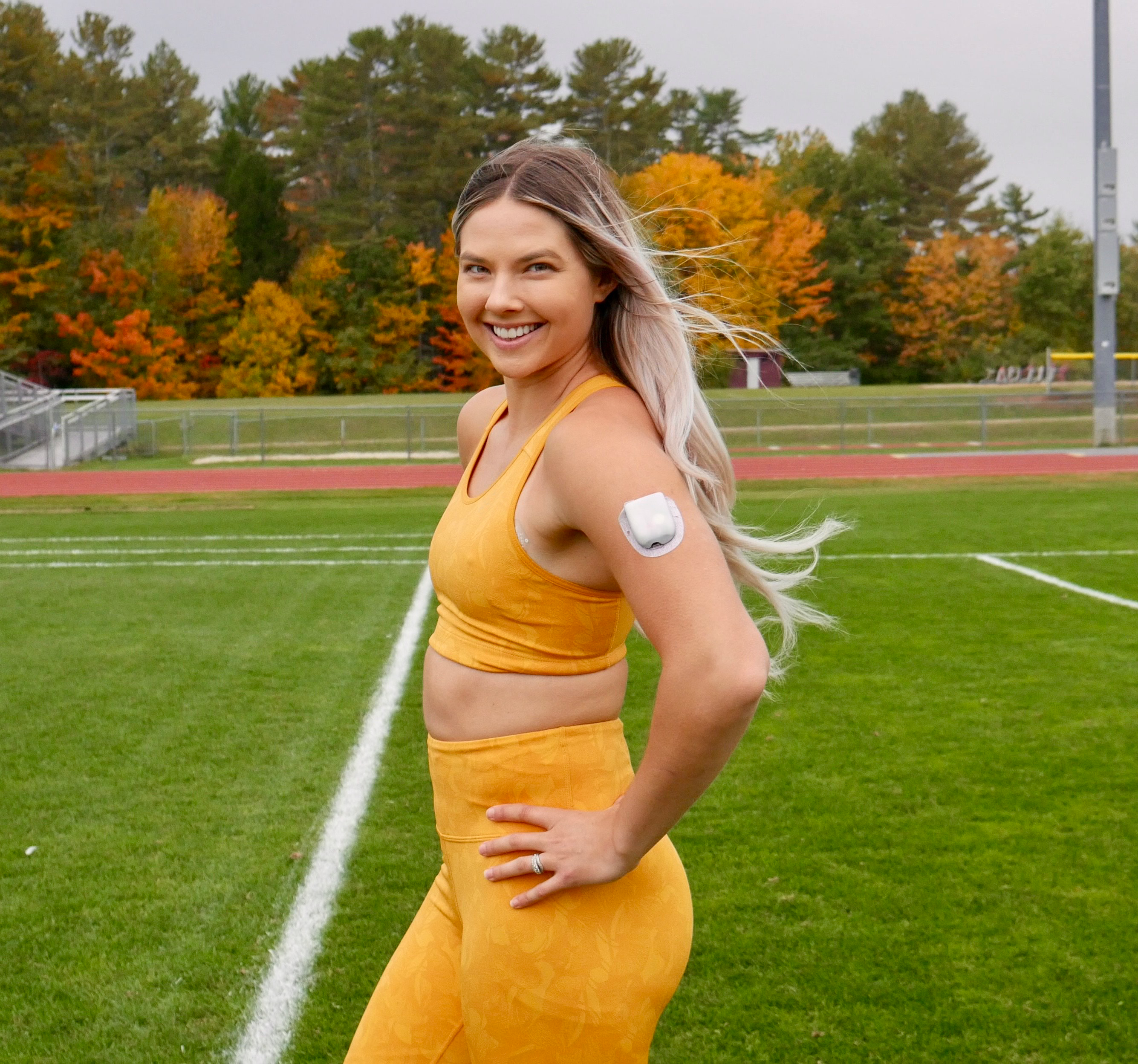For those that would like to use it, Temp Basal Rates are also accessible in Omnipod 5 in Manual Mode. When using Temp Basal Rates in Manual Mode, insulin delivery will not be automatically adjusted in response to predicted rising or falling glucose like it would in Automated Mode, so speak with your HCP to see if using Temp Basal Rates in Manual Mode is right for you.
In addition to Activity feature and Temp Basal Rates, there are more factors to consider when preparing for exercise that may impact the way you choose to manage your diabetes.
Activity Type
Just as your glucose can respond differently to foods, it can do the same with varying forms of exercise, which may result in high (hyperglycemia) or low (hypoglycemia) glucose levels.
With aerobic exercise, like the examples below, the body utilizes oxygen to fuel the activity. Aerobic exercise can increase insulin sensitivity and can decrease your body’s stored glucose reserves, which may increase the risk of low glucose even hours after the activity is complete. Explore options for lessening the risk of hypoglycemia with your HCP such as reducing a mealtime bolus before the activity or utilizing Activity feature or a Temp Basal.
- Running, jogging or walking
- Swimming
- Skiing or snowboarding
- Elliptical
- Rowing
- Cycling
- Stair Climbing
- Step Aerobics
- Dancing
- Hiking
Anaerobic activity, like the examples below, involves short bursts of energy. Anaerobic activity does not rely on oxygen for fuel and instead uses energy stored in your muscles. During these types of exercise, your body releases hormones that cause your liver to release extra glucose into your body. If you experience exercise-induced hyperglycemia, discuss the possibility of incorporating a pre-activity bolus with your HCP.
- High-Intensity Interval Training (HIIT)
- Weightlifting
- Sprinting
- Dancing
- Gymnastics
- Figure skating
- Jumping rope
- Wrestling
Recent Meals or Insulin on Board (IOB)
One consideration that may be overlooked when getting ready to break a sweat is the impact that recent meals or IOB may have on glucose levels. IOB refers to the insulin delivered by your Pod that remains active in your body and continues to reduce your blood glucose. Exercise has the potential to increase your sensitivity to insulin and, as a result, your glucose may drop quicker during or after exercise if you have a considerable amount of IOB from a recent meal or correction bolus. Be mindful of this when you're planning to exercise. For example, if you're eating lunch, but planning to go on a jog shortly after, your HCP may suggest reducing your meal bolus in order to prevent hypoglycemia.
Time of Day
Are you an early morning weightlifter, or a late-night yogi? Depending on your answer, you may find you need to adjust for exercise differently. One consideration is something called Dawn Phenomenon where people with diabetes may see increased glucose levels in the early morning due to hormones released during sleep, which cause the liver to produce more glucose.
If you frequently experience Dawn Phenomenon, you may consider scheduling activity in the morning to combat the rise in your glucose levels. Additionally, exercising before breakfast will mean less IOB from previous boluses, which may make avoiding hypoglycemia easier.
Alternatively, if you prefer to work out in the afternoon or evening, you may have more IOB prior to exercising. In this case, you may need to adjust your insulin delivery for a longer length of time before any activity to reduce the total amount of IOB before exercising.
Unplanned Activity
Another factor to consider is unplanned movement like tidying up around the house, yard work, or grocery shopping. You may find that your glucose drops during these activities. Take note of these and consider talking to your HCP about some of the tips discussed in this article.
If preparing for or managing diabetes around exercise sounds like a workout in and of itself, we get it! Sometimes, life doesn't allow you time to adjust your insulin delivery before a spontaneous opportunity arises. If you aren't able to plan or adjust your insulin for exercise, consider the other route and talk to your HCP about pretreating with fast-acting carbohydrates to allow your glucose to rise before exercise. Depending on the length, intensity, or type of exercise, you’ll want to adjust your carbs accordingly. Additionally, Activity feature and Temp Basal Rates may still be useful here to minimize the risk of low glucose during and after exercise.
